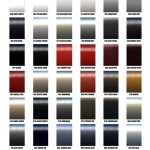Interior Design Courses in Florida: A Comprehensive Guide
Florida, with its vibrant culture, diverse architectural styles, and booming real estate market, presents a compelling landscape for aspiring interior designers. The state offers a multitude of educational opportunities for individuals seeking to enter or advance within the field. This article provides a comprehensive overview of interior design courses available in Florida, highlighting key aspects such as program types, accreditation, curriculum features, and career prospects.
Prospective students have a range of program options to consider, encompassing everything from associate degrees to master's degrees. Each level of education caters to specific career goals and prior experience. Selecting the right program is crucial for achieving one's desired level of professional competency and securing fulfilling employment within the interior design sector.
Accreditation and Program Types
Accreditation plays a significant role in the quality and recognition of an interior design program. The Council for Interior Design Accreditation (CIDA) is the primary accrediting body for interior design programs in the United States and Canada. CIDA-accredited programs undergo rigorous evaluations to ensure they meet established standards for curriculum content, faculty qualifications, and learning resources. Graduating from a CIDA-accredited program is often a prerequisite for professional licensure and certification, as well as enhancing career prospects.
Several types of interior design programs are available in Florida. Associate degrees, typically two-year programs, provide a foundational understanding of interior design principles and practices. These programs are well-suited for individuals seeking entry-level positions or those wishing to build a solid base before pursuing further education. Coursework usually includes drafting, space planning, color theory, and an introduction to building codes and materials.
Bachelor's degrees in interior design are four-year programs that offer a more comprehensive and in-depth education. These programs build upon the foundational knowledge acquired in associate degree programs and explore advanced topics such as sustainable design, lighting design, construction documents, and project management. Bachelor's degree programs often incorporate studio-based learning experiences, allowing students to apply their knowledge to real-world design challenges. Many CIDA-accredited programs in Florida are offered at the bachelor's level.
Master's degrees in interior design are postgraduate programs designed for individuals seeking advanced specialization or leadership roles within the field. These programs typically require two to three years of study and focus on research, theory, and advanced design concepts. Master's degree programs often emphasize areas such as healthcare design, hospitality design, or sustainable design. Graduates with a master's degree are well-positioned for academic positions, research roles, or senior-level design positions.
In addition to degree programs, certificate programs are also available. These programs typically focus on a specific area of interior design, such as kitchen and bath design or space planning. Certificate programs can be a valuable option for individuals seeking to enhance their skills or specialize in a particular niche within the field.
Curriculum Features and Course Content
The curriculum of an interior design program is designed to provide students with a comprehensive understanding of the principles, practices, and technologies used in the profession. A well-structured curriculum will encompass both theoretical knowledge and practical skills. Core subjects typically include:
Design Fundamentals: This area of study covers the basic elements of design, such as line, form, color, texture, and space. Students learn how to apply these elements to create aesthetically pleasing and functional interiors.
Space Planning: This involves the analysis of spatial requirements and the development of efficient and effective layouts. Students learn how to create floor plans that meet the needs of the client while adhering to building codes and accessibility standards.
Color Theory: Understanding color psychology and the effective use of color is crucial for interior designers. Students learn about color schemes, color mixing, and the impact of color on mood and perception.
Materials and Finishes: This area of study covers a wide range of materials used in interior design, including flooring, wall coverings, textiles, and furniture. Students learn about the properties of different materials, their applications, and their environmental impact.
Lighting Design: Effective lighting is essential for creating a comfortable and functional interior. Students learn about different types of lighting fixtures, lighting techniques, and the importance of energy efficiency.
Building Codes and Regulations: Interior designers must be knowledgeable about building codes and regulations to ensure that their designs are safe and compliant. This includes understanding accessibility standards, fire safety requirements, and other relevant regulations.
Computer-Aided Design (CAD): Proficiency in CAD software is essential for creating technical drawings and visualizations. Students learn how to use CAD software to create floor plans, elevations, and 3D models.
Sustainable Design: With increasing awareness of environmental issues, sustainable design practices are becoming increasingly important. Students learn about green building materials, energy-efficient design strategies, and the principles of sustainable design.
Professional Practice: This area of study covers the business aspects of interior design, including contract negotiation, project management, and client relations.
Beyond these core subjects, many programs also offer specialized courses in areas such as kitchen and bath design, healthcare design, hospitality design, and retail design. These specialized courses allow students to develop expertise in a specific area of interest.
Career Prospects and Professional Development
Graduates of interior design programs in Florida can pursue a variety of career paths. Common career options include:
Residential Interior Designer: Residential designers work with homeowners to create functional and aesthetically pleasing living spaces. They may be involved in all aspects of the design process, from initial consultations to the selection of materials and finishes.
Commercial Interior Designer: Commercial designers work on a wide range of projects, including offices, retail spaces, restaurants, and hotels. They focus on creating interiors that are functional, efficient, and visually appealing to employees and customers.
Healthcare Interior Designer: Healthcare designers specialize in creating healing and supportive environments for patients, staff, and visitors. They must be knowledgeable about the specific requirements of healthcare facilities, such as infection control and accessibility.
Hospitality Interior Designer: Hospitality designers work on projects such as hotels, resorts, and restaurants. They focus on creating interiors that are inviting, comfortable, and memorable for guests.
Kitchen and Bath Designer: Kitchen and bath designers specialize in the design of kitchens and bathrooms. They must be knowledgeable about plumbing, electrical systems, and building codes.
Space Planner: Space planners analyze spatial requirements and develop efficient and effective layouts for buildings and offices. They work closely with architects and other professionals to optimize the use of space.
Interior Design Consultant: Interior design consultants provide expert advice and guidance to clients on a variety of design issues. They may work on a freelance basis or be employed by a design firm.
Beyond formal education, professional development is essential for staying current with industry trends and advancing within the field. Interior designers can pursue professional certifications, such as the National Council for Interior Design Qualification (NCIDQ) certification, to demonstrate their competency and commitment to the profession. Continuing education courses, workshops, and conferences also provide opportunities for professional development and networking.
Membership in professional organizations, such as the American Society of Interior Designers (ASID) and the International Interior Design Association (IIDA), can also provide valuable networking opportunities and access to resources. These organizations offer educational programs, industry events, and advocacy for the profession.
In conclusion, Florida offers a diverse range of interior design courses to suit various career aspirations and educational backgrounds. Careful consideration of program accreditation, curriculum features, and career goals is crucial for selecting the most appropriate program. Continuous professional development and engagement with industry organizations are essential for long-term success in the field of interior design.

General Information Department Of Interior Design

Fsu Department Of Interior Architecture And Design

Interior Design Training Redesign Courses Orlando Florida

Interior Design College Of Construction And Planning Admissions

Graduate Program Fsu Department Of Interior Architecture And Design

Fiu Interior Architecture Ranked 4 Carta News

2024 Outstanding Jrs Srs Department Of Interior Design

2024 Outstanding Jrs Srs Department Of Interior Design

Interior Design Carta News

Phd In Interior Design Stem Designated Department Of
Related Posts








